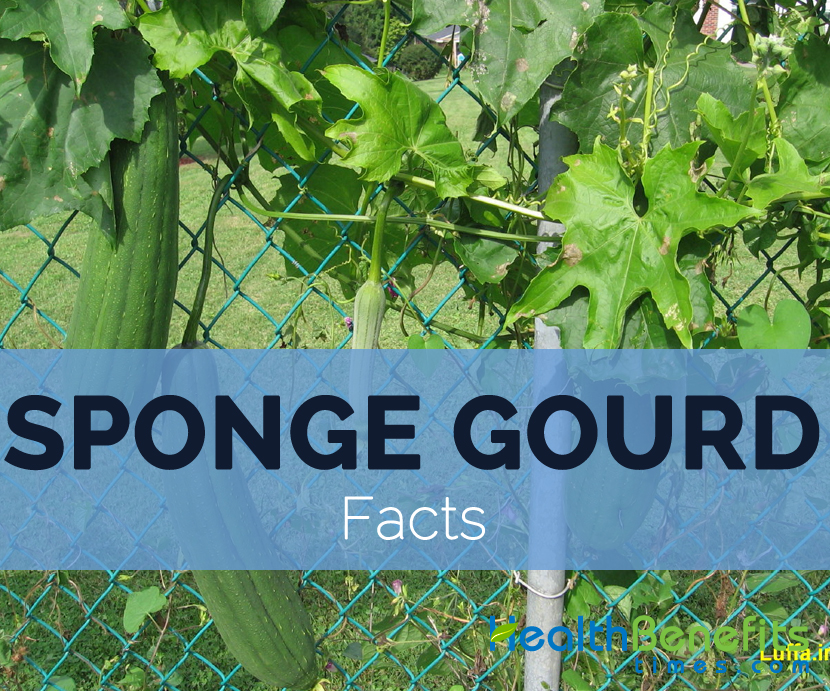 Sponge gourd which is also known as dishcloth gourds or vegetable sponge, loofah is cultivated for its fibrous tissue skeleton. It is an annual climbing vine. The mature plant is used as a kitchen sponge or organic bath.
Sponge gourd which is also known as dishcloth gourds or vegetable sponge, loofah is cultivated for its fibrous tissue skeleton. It is an annual climbing vine. The mature plant is used as a kitchen sponge or organic bath.
| Name | Sponge gourd |
|---|---|
| Scientific Name | Luffa aegyptiaca |
| Native | Tropical Africa and Asia but now grown throughout Asia and the United States for food and scrubbers. |
| Common/English Name | Common Luffa, Bath Sponge, Dish Cloth Gourd, Sponge Gourd, Dish-Cloth Gourd, Towel Gourd, Dishrag Gourd, Vegetable Sponge, Rag Gourd, Wash-Rag Sponge, Smooth Luffa, Scrubber Gourd, Wild Vegetable Sponge |
| Name in Other Languages | Arabic: Luff, Lûf; Bangladesh: Dhundol; Bolivia: Estropajo; Brazil: Bucha, Gonçalinho; Chinese: Si Gua, Shui Gua; Chuukese: Mororof; Columbia: Estropajo; Cook Islands (Maori): Pō‘Ue, Puru; Czech: Tivuk Egyptský, Lufa Válcovitá; Danish: Egyptisk Luffa, Vegetabilsk Svamp; Dutch: Loofah, Sponskomkommer; French: Courge Cylindrique De Chine, Eponge Végétale; German: Luffa, Netzgurke; Guatemala: Estropajo; Honduras: Estropajo; Hungarian: Halostök, Szivacstök; India:- Assamese: Bhatkakrel, Bhol, Bengali: Dhundul, Hastighasha, Hindu: Dhodka, Ghia-Torai, Kannada: Araheere, Tuppahire, Malayalam: Cattu-Picinna, Puttilpiram, Manipuri: Shebot, Marathi: Ghadaghosali, Paroshi, Sanskrit: Dhamargava, Sapitaka, Tamil: Mulukkupperakkai, Vatukikam, Telugu: Netibirakaya, Neti Beera; Indonesia:– Javanese: Blestru, Blustru, Madurese: Bludru, Ghludhru, Malay: Blustru, Sundanese: Bulustu, Emes, Sumatran: Ketola, Hurunh Jawa; Italian: Luffa, Zucca Da Spunge; Japanese: Hechima, Naga Ito-Uri; Khmer: Ronôông Muul; Korean: Su Sa Mi Oe; Laotian: Mak Bouap, Bwàp Khôm; Malaysia: Ketola Manis, Petola Buntal; Mauritius:– French: Courge Torchon, Pétole; Mexico: Estropajo Nepal: Palo, Ghiu Toriya; Nicaragua: Estropajo; Pakistan: Ghia Tori; Panama: Estropajo Peru: Estropajo; Persian: Khujar; Philippines :- Bisaya: Tabobog, Patola, Bikol: Patola, Bontok: Kabatiti, Iloko: Tabau-Tabau, Kabatiti-Aso, Spanish: Pepinillo De San Gregorio, Sulu: Patula-Amu, Tagalog: Patola, Tabobog; Polish: Trukwa Egipska; Portuguese: Lufa, Fruta Dos Paulistas; Samoan: Meleni Vao; Russian: Ljufa; Spanish: Esponja, Paste; Sri Lanka (Sinhala) : Vatakolu; Swedish: Luffa; Tahitian: Aroro, Huerhaho; Thai: Buap-Rom, Buap- Klom; Tibetan: Ra Dza Ko Sa Ta Ki; Tongan: Fangu ‘A Kuma, Mafa‘I; Turkish: Luf; Uganda (Luganda): Kyangwe, Runyoro, Rutooro: Ekyangwe; Venezuela: Estropajo; Vietnam: Mướp Hương; Wallisian: Mafa‘I |
| Plant Growth Habit | Annual vine, coarse, vigorous, monoecious |
| Growing Climate | Tropical and subtropical |
| Soil | Well-drained |
| Plant Size | 30 ft. (9 m) long |
| Stem | Five angled stems |
| Leaf | Ovate-reniform, dark green with silvery patches topside |
| Edible parts of the plants | Fruit, flowers and leaves: It is used as a vegetable which is prepared like squash or consumed raw as cucumbers. Flowers buds: It is used as vegetables. Young fruit: It is boiled with coconut milk by slicing for sambal or sayur. Seeds: It is prepared with salt and consumed by roasting as a delicacy. |
| Flowering Season | Summer |
| Flower | Yellow, monoecious, diameter: 5-7.5 cm |
| Fruit shape & size | Cylindrical, smooth, fusiform, length: 24 in (61 cm) and diameter: 3 in (7.6 cm); |
| Fruit color | Green |
| Flesh color | White |
| Fruit peel | Thin and smooth |
| Fruit Taste | Resemble zucchinis |
| Seed | Flat ovate, smooth, black, 1–12 cm long |
| Varieties/Types | Angled luffa, Smooth luffa, Taiwan luffa |
| Fruit Season | Long season |
| Major Nutritions | Vitamin A 463 µg (66.14%) Carbohydrate 25.53 g (19.64%) Vitamin B5 (Pantothenic acid) 0.892 mg (17.84%) Manganese, Mn 0.397 mg (17.26%) Potassium, K 806 mg (17.15%) Copper, Cu 0.151 mg (16.78%) Total dietary Fiber 5.2 g (13.68%) Vitamin B6 (Pyridoxine) 0.176 mg (13.54%) Vitamin C (Ascorbic acid) 10.1 mg (11.22%) Magnesium, Mg 36 mg (8.57%) Iron, Fe 0.64 mg (8.00%) Phosphorus, P 55 mg (7.86%) Vitamin B1 (Thiamin) 0.082 mg (6.83%) Vitamin B2 (Riboflavin) 0.075 mg (5.77%) Vitamin B9 (Folate, Folic acid) 21 µg (5.25%) |
| Health Benefits |
|
| Calories in 1cup (178 gm) | 100 Kcal. |
| Traditional uses |
|
| Precautions | Luffa is safe in food amounts for pregnant and breast-feeding women whereas the intake in huge amounts should be avoided. |
| How to Eat |
|
| Other Facts |
|

